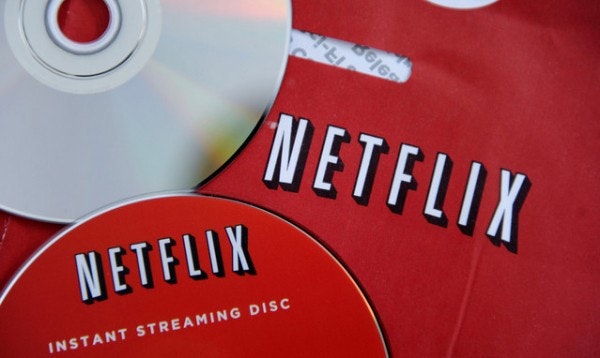Netflix, Inc. (NASDAQ:NFLX) almost doubled its value since the beginning of the year following the production of “House of Cards,” and expansion into international markets. The company is expected to lead the revolution in television content, in other words, cable companies and satellite providers are expecting to lose business to Netflix, Inc. (NASDAQ:NFLX) and peers at a high pace.

“House of Cards,” which was launched in early February, is a perfect example of the business model change Netflix, Inc. (NASDAQ:NFLX) implemented in recent months. The company’s major move under the new strategy is closing exclusive agreements. For instance is the $300 million per year exclusive agreement with The Walt Disney Company (NYSE:DIS) last December which as of 2016 new Disney’s content will be broadcasted exclusively via Netflix.
Significant part of the increase in share price (95% YTD) is related to the success of House of Cards. Of course, the improved business performance results reported in the last quarter contributed to the company’s recent soaring share price, with its accompanying 635 P/E ratio. Many believe Netflix, Inc. (NASDAQ:NFLX)’s ratio is inflated, however, I strongly believe share price can easily reach new highs.
Business prosperity led to new competition from Amazon (NASDAQ:AMZN), Apple Inc. (NASDAQ:AAPL), Hulu, Vudu and other companies offering wide variety of HD content. Apple Inc. (NASDAQ:AAPL) TV, for instance, indirectly competes with Netflix, Inc. (NASDAQ:NFLX) by offering quality content in an easy to use technology which sure threatens to “bite” market share from Netflix. Peter Misek, analyst at Jefferies, quoted saying “Apple Inc. (NASDAQ:AAPL) could change how the internet is blended into the TV.” In essence, I truly believe the heavy investment in original content is going to differentiate Netflix from competitors.
Growth Engines – Exclusive agreements & international expansion
One of the greatest challenges in the broadcasting field for players like Netflix is the cost of content and the cost of differentiation among the different players. Original content costs are on the rise, resulting in outrageous investment costs. In essence, only players with deep pockets are expected to survive the “stormy weather.” Netflix, Inc. (NASDAQ:NFLX)’s management realized the magnitude of the threat and had changed their business philosophy to better cope with the growing competition.
The main changes are signing exclusive broadcast agreements with studios, such as the agreement with Disney, and more importantly to produce their own series, such as the successful House of Cards. Netflix might hope to make a hybrid model that combines, on the one hand, the ability to mediate between broadcast studios and content producers to the end consumer, and on the other hand, act as an independent channel for a series (such as HBO).
In fact, many think the big media buzz surrounding House of Cards will impact Netflix in the same manner “Mad Men” and the “Sopranos” impacted AMC and HBO, respectively. Moreover, Netflix, Inc. (NASDAQ:NFLX) is expected to release four more original series and complete the strategic transformation while creating differentiation from competitors: No more VOD channel – but a site with unique and exclusive content.
The name of the game is of course increasing the number of subscribers. Netflix hopes to further accelerate the pace of adding new subscribers. The previous quarter was a record quarter with the addition of more than 2 million new subscribers in the U.S. (a 25% annual growth rate). The numbers are impressive; the company already has 27 million subscribers in the U.S. – more than the estimated cable channel SHOWTIME – slightly under 30 million subscribers of HBO.
According to estimates, by the end of the year Netflix is expected to override HBO’s number of subscribers in the U.S. Besides, Netflix already has 6 million international clients in 40 countries. Netflix wins in the UK and Canada, and successfully entered the Nordic countries. In Latin America, where there are about 50 million homes connected to high-speed internet today, there is by far the largest potential for expansion outside of the U.S. International markets deliver a 60% growth rate per year and are expected to continue growing in the same pace in coming years. Although the company is still losing money in the international arena, it is expected to become profitable in the next couple of years.
Positive outlook
After several disappointing quarters of in terms of growth rate and profit margins, the fourth quarter’s numbers were impressive: revenue of $945 million and earnings per share of $0.13 to beat many analysts’ expectations. Netflix expects to remain profitable in the current and future quarter.
The Foolish bottom line
The change in Netflix business strategy proves itself at this point, and it seems that due to the expected global transition from content via cable and satellite to independent online content consumption, the company will continue to grow (despite the stiff competition) and its share price will continue to reach new highs.
The article The True Edge of Netflix originally appeared on Fool.com and is written by Yaniv Hirsch.
Copyright © 1995 – 2013 The Motley Fool, LLC. All rights reserved. The Motley Fool has a disclosure policy.
